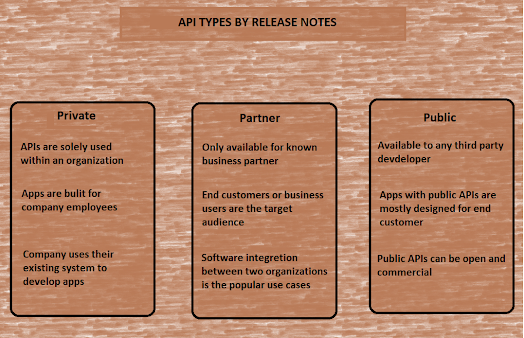- Get link
- X
- Other Apps
API or application programming interface is a software intermediary, or a medium, or a joiner between two computers or computer programs. For example, Facebook and messenger are different applications but the API joins them together. Basically, API is a central worker between two PC programs.
For easy understanding, see the example below.
Suppose you want to go from A to B. The distance between A and B is 200 km. You need a vehicle (bus, train, plane) to reach the destination. Here, the vehicle is the API. Now you understand that not every API can be the same. Some will be fastest and some will be slowest Developers work very hard to make the API faster.
Types of APIs
Private APIs. These APIs are intended to create additional courses of action and organizations inside an affiliation Internal engineers or employees for hire can use these APIs to coordinate an organization's IT framework or applications, create new frameworks, or use existing frameworks to create client-facing applications.
Regardless of whether applications are freely accessible or not, the connection point is accessible only to those who work directly with the API distributor. Private mode allows an organization to fully control API usage.
Partner APIs. Partner APIs are simply enhanced in any way offered to partners who have consented to work with the distributor. A common use case for partner APIs is programming coordination between two assemblies.
An organization that provides affiliates with information or qualifying benefits from additional income streams. At the same time, it can screen how exposed advanced resources are used, guarantee that external systems using their APIs offer a fair client experience, and keep up with the corporate personality in their applications.
Public APIs. The public API is accessible to any external developers. A public API program can increase brand awareness and generate additional revenue if executed appropriately.
Similarly what an API provides is a layer of security
Your phone's data is never fully presented to the server, and likewise, the server is never fully presented to your phone. All things considered, everyone speaks with a heap of little information, simply sharing what's significant enough to mention the takeout. You tell the cafe what you want to eat, they stop for a minute and then, finally, you get your dinner.
APIs have become so critical that they account for a large portion of the payroll of many associations Critical companies like Google, eBay, Salesforce.com, Amazon and Expedia are two or three associations that get cash from their APIs. What the "programming point of association economy" refers to is the heart of this business of APIs.
What does modern api mean?
Reliably, an "API" consistently depicts any kind of unavailability affiliation feature in an application. Of late, however, cutting edge APIs have adopted some features that make them exceptionally important and helpful:
- Modern APIs stick to principles (regular HTTP and REST), which are engineer-agreed, functionally open, and widely understood.
- They are managed more like things than code. They're normal for use by express groups (eg, flexible subject matter experts), they're recorded, and they're outlined with the ultimate goal that clients can make unambiguous assumptions about their support and lifecycle.
- Because they have been substantially naturalized, there is much more grounded discipline for their safety and administration, as well as monitoring and supervision for execution and scale.
- Like other pieces of productized software, modern APIs have their own software development lifecycle (SDLC) of planning, testing, building, due making, and forming.


Comments
Post a Comment